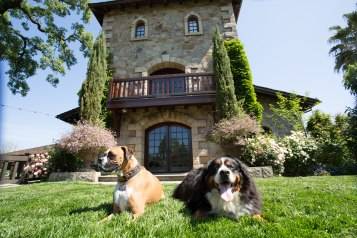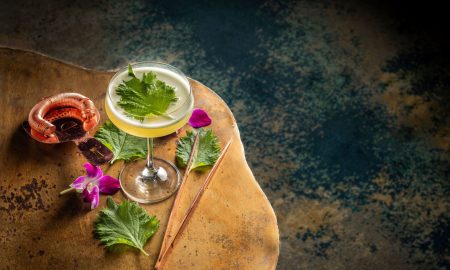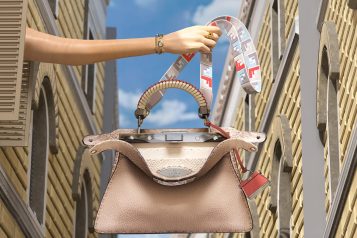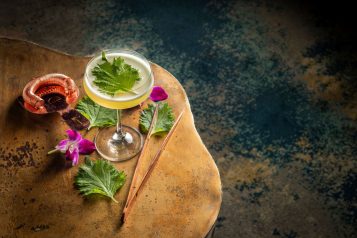
Navigating the wonderful world of wine can be a bit intimidating — there’s virtually thousands of bottles, wineries, and winemakers out there, not to mention countless regions to choose from. For example, once you’ve selected the perfect bottle of Bordeaux, should you age it or drink it immediately? And what about aeration? Is it always necessary or only in some cases? We recently sat down with Michael Hildbold, the wine buyer from one of San Francisco’s most illustrious shops and men’s clubs, Wingtip, to discuss the aforementioned wine topics. Here Hildbold, who was the sommelier for the Ritz-Carlton before he took his role as head wine guy at Wingtip’s new liquor shop, the Bank of Spirits, shares the bottles he’s loving for now and later as well as his thoughts on aeration versus decanting.
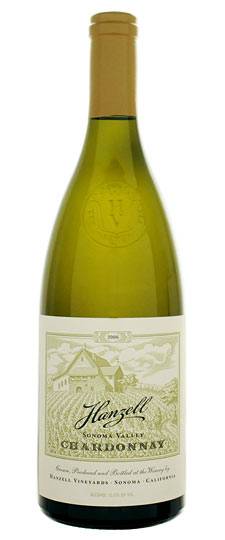
2012 Hanzell Chardonnay, Sonoma Valley, California
According to Hildbold, Hanzell is a historic icon of Sonoma. “US Ambassador James Zellerbach founded the property in 1957 after spending time in Burgundy and enjoying the wines there. The winery was named for his wife Hannah.” After the death of the ambassador, the winery changed hands several times, but was finally purchased by an English aristocrat named Barbara de Brye. Hildbold believes that the star of Hanzell was the late winemaker Bob Sessions, who lead Hanzell stylistically from 1973 until his death in 2014. His favorite bottle is the 2012 chardonnay. He describes it as being “rich, creamy, and delicious; perfectly balanced and the closest to fine white burgundy that I’ve tasted in any domestic chardonnay. No butter component present, and no obvious oak – the oak is entirely integrated into the wine, giving it an incredible body cut through with just the right amount of acidity. Lees stirring provides a creamy texture and mouthfeel.”
2013 Do Ferreira Albariño ‘Cepas Vellas’, Rias Baixas, Spain
This wine comes from some of the oldest vines in the world — they date back to over 250 years ago. Hildbold says “they look like literal trees, trellised so the vines rise above head level, and the grapes hang down below, in what is known as the ‘pergola’ system.” How does it taste? He says it’s “crisp and minerally like licking wet limestone, with white flower, peach skin, and apricot. This is lovely, balanced, concentrated example of Albariño.” Since this grape variety isn’t meant for ageability, it is best when enjoyed young and fresh.
2012 Piedrasassi Syrah, Santa Barbara County, California
Piedrasassi is a small Central Coast producer making rich, velvety Syrah. Hildbold says this one is “full of ripe fruit, dark berries, and jerky. I think the wine is best now, emphasizing the bold and ripe fruit characteristics.”
2012 Precedent ‘Evangelho Vineyard’ Zinfandel, Contra Costa Country, California
The Evangelho vineyard was planted in 1890 on its own roots which is a rarity nowadays. “This zin is bright and full of fresh fruit, with concentrated blackberry and blueberry notes.”
Chartogne-Taillet ‘Sainte-Anne’ Brut, Champagne, France, NV
You can’t go wrong with a classic dry bubbly from Champagne. This is the one that Hildbold is loving right now. He observes that it “is yeasty, full-bodied, and delectable, an excellent value.”

2010 Domaine Raveneau ‘Montée de Tonnerre,’ Chablis Premier Cru, France
Raveneau wines are extremely hard to come by and Hildbold is one of the few retailers that has some in stock. This particular wine “is creamy, yet minerally, rich, yet taut, displaying apricot, quince paste, and pear tart.”
2006 Chateau Cos d’Estournel, St.-Estephe, Bordeaux, France
Cos wines are dark and brooding, and can easily age 20+ years. Hildbold states that they get better with age: “In youth, they display a brambly black fruit, earth, and leather character, gaining a savory, woodsy note with age.”
2007 Uccelliera Brunello di Montalcino, Tuscany, Italy
Hildbold says that “Uccelliera is a tiny producer of Brunello, making wine in a traditional manner (large neutral oak barrels, firm tannin, high acidity, early picking) but with an eye to cleanliness in the winery.” This process makes the wines more fruit driven and not as funky as some Brunellos, but still “very delicious and age-worthy. This wine could be laid down for 10 more years.”
Bollinger RD, Ay, Champagne, France, 2002
A blend of 60% pinot noir and 40% chardonnay, this bubbly is fermented in a mix of steel and wooden cask, some of which are over 100 years old. Hildbold observes that it’s taste is “rife with saline minerality, chalk, lemon zest, red apple, marzipan, honey, and just a hint of autolytic toastiness. Great acidity, still very young and fresh with years of maturity ahead. Makes me feel like James Bond every time I drink it. When I last tasted this wine about six months ago it was still in its primary stages, and could last for at least another decade of drinkability.”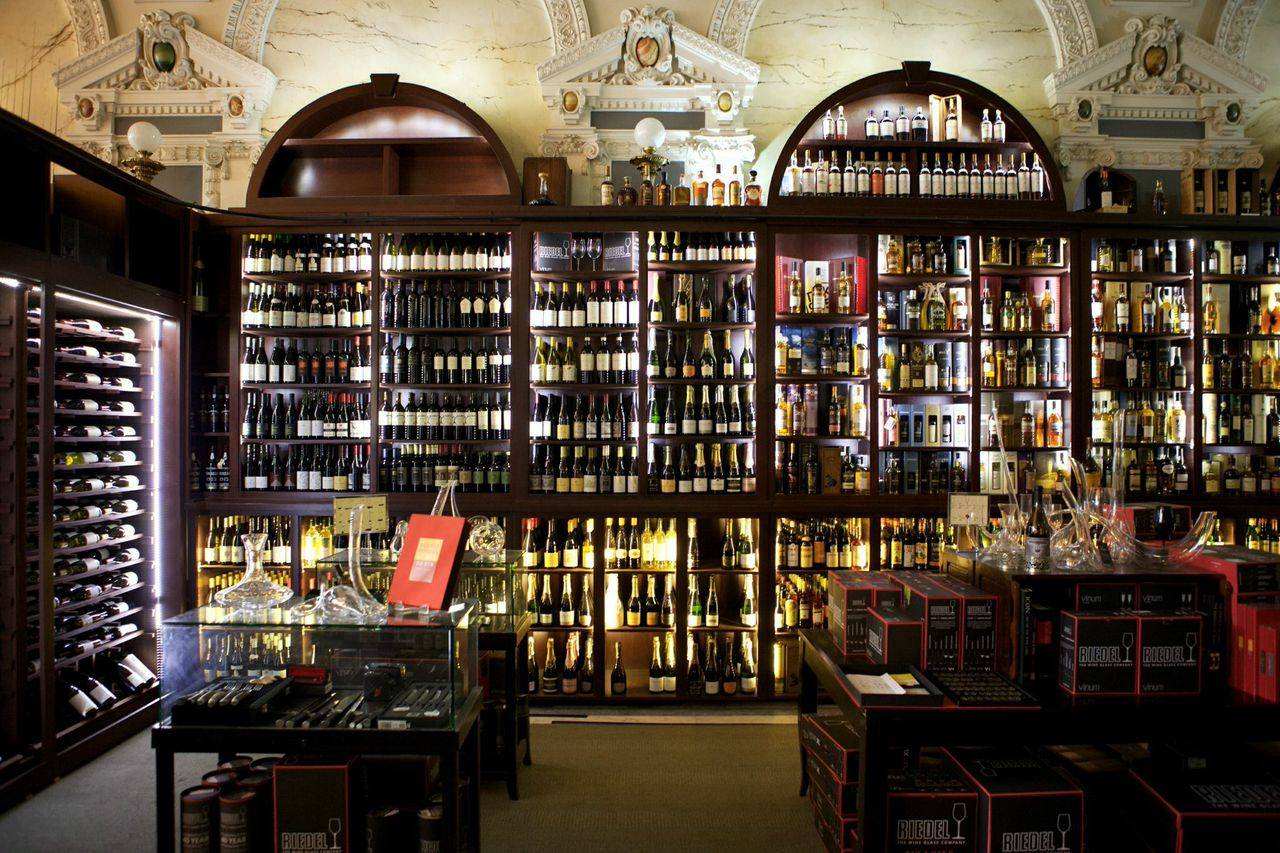
Aeration vs Decanting
There are a variety of devices out now that aerate wines in different ways. The most popular and well known of these gadgets is the Vinturi. “These devices infuse the wine with copious amount of oxygen quickly,” explains Hildbold. “I feel that their use is best for young, big wines such as Cabernet or Bordeaux. My issue is that the Vinturi so rapidly oxygenates a wine that it can quickly over-oxygenate delicate wines.” He recommends avoiding the Vinturi on anything delicate that could be damaged by excessive air. He also notes that he doesn’t like to use aeration products at home. “Part of what makes wine interesting to me is to see how it changes from minute to minute. As such, I always prefer to decant my wines and taste every 10 minutes or so to see the changes. If I were to use an aerator, all of the evolution of a wine exposed to air over time would be lost, which is one of the most interesting fascinating aspect of wine, in my opinion.”








